Silent Sentinels Picket for Women's Suffrage (1917-1919)
Introduction
Text-to-speech Audio
Images
Alice Paul led the Silent Sentinels to their first protest at the White House on January 10, 1917. She was a committed advocate of nonviolent yet public protest and continued fighting for women's rights until her death in 1977. Library of Congress.
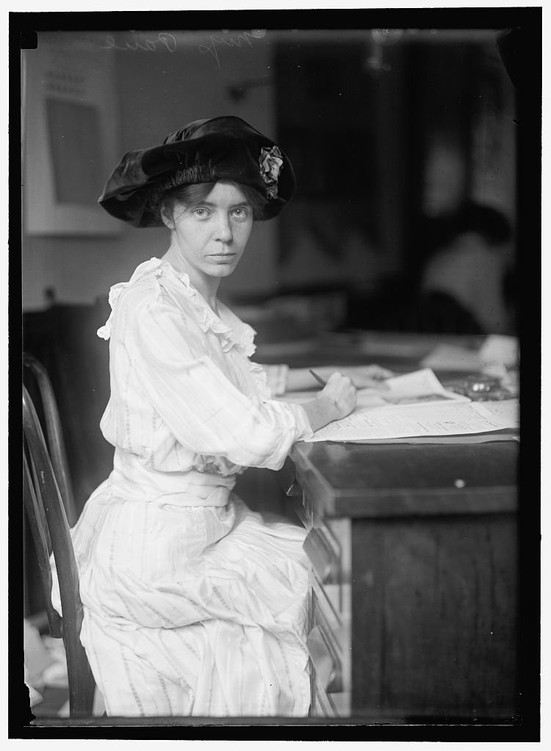
Lucy Burns and Alice Paul founded the National Woman's Party in 1913. While serving the maximum sentence in jail, Burns led many of the hunger strikes among incarcerated Silent Sentinels. Library of Congress.
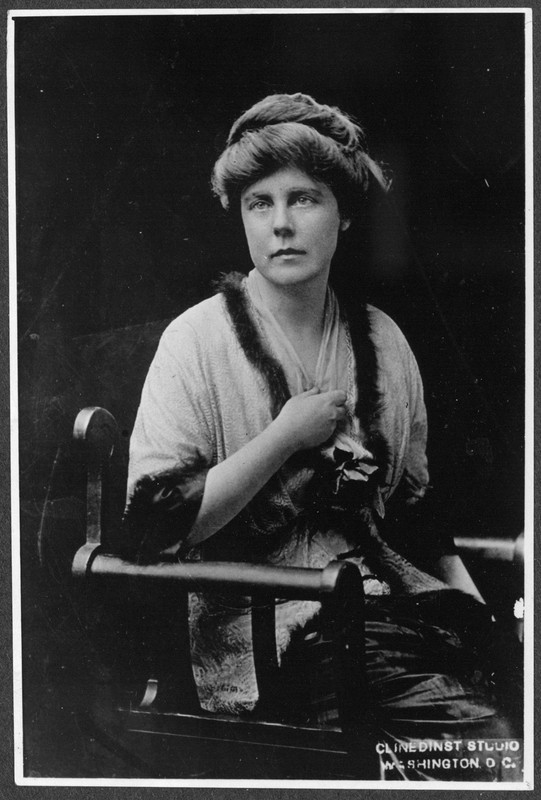
Members of the National Woman's Party stand in front of the White House to make a statement for women's suffrage. Library of Congress.
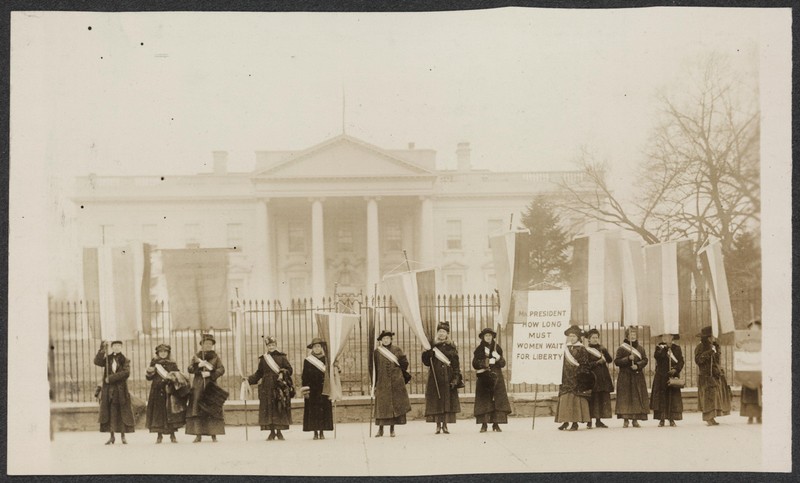
Alison Turnbull Hopkins, Silent Sentinel later jailed for her activism, pickets outside the White House. Library of Congress.
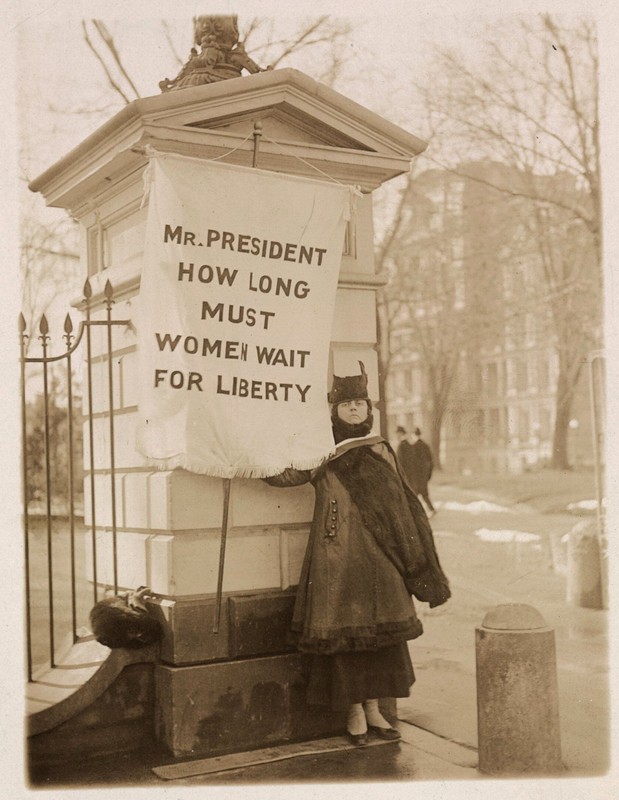
Picketers held signs that directly called upon President Woodrow Wilson to respond to their calls for liberty and democracy. Library of Congress.
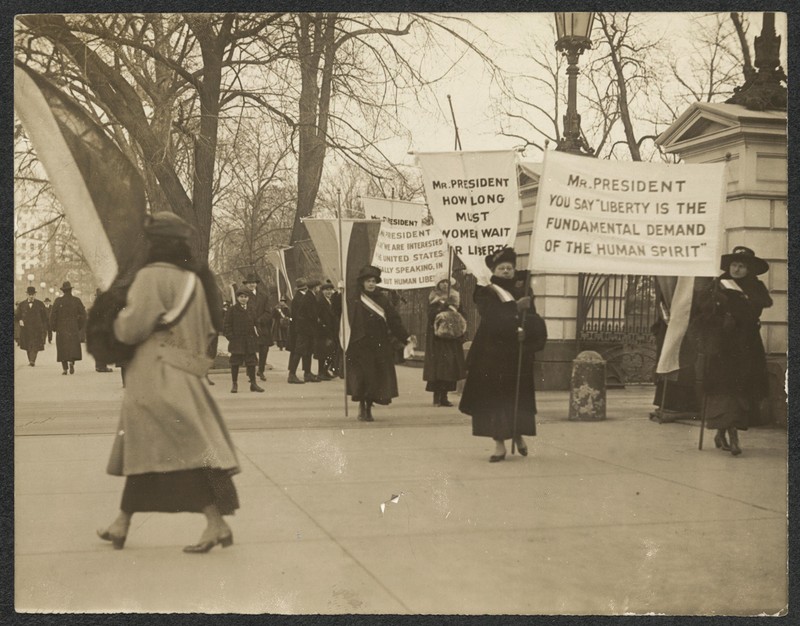
On March 4, 1917, during Wilson's second inauguration, a group of 1,000 protesters marched around the White House for women's suffrage. Library of Congress.
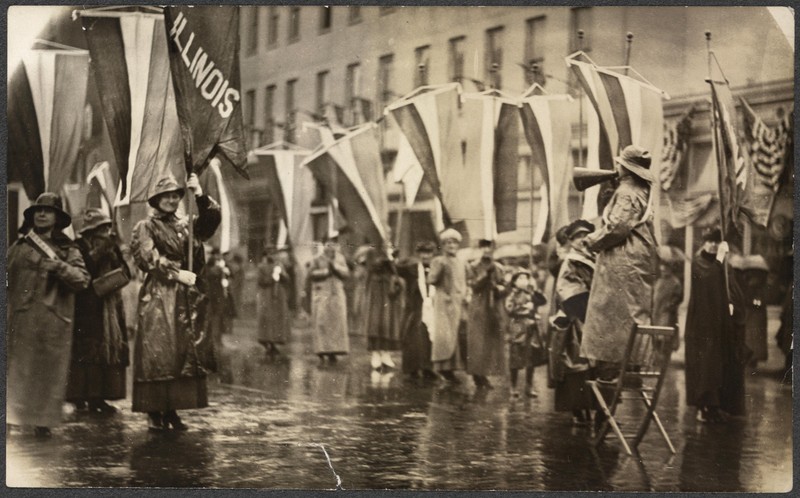
President Wilson had requested the National Woman's Party to "concert public opinion" on women's suffrage. Their public activism was an effort to garner public response. Library of Congress.
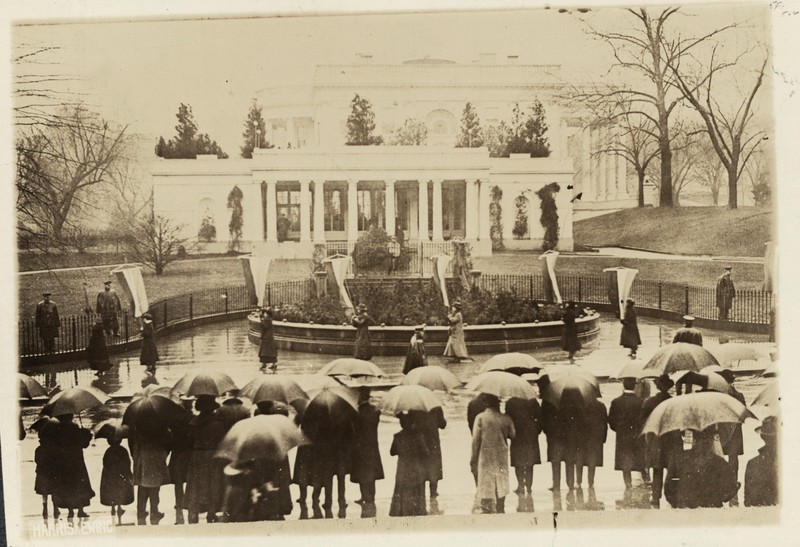
Pauline Adams, an Irish immigrant and suffragist, is pictured in her prison garb. She later became a lawyer. Library of Congress.
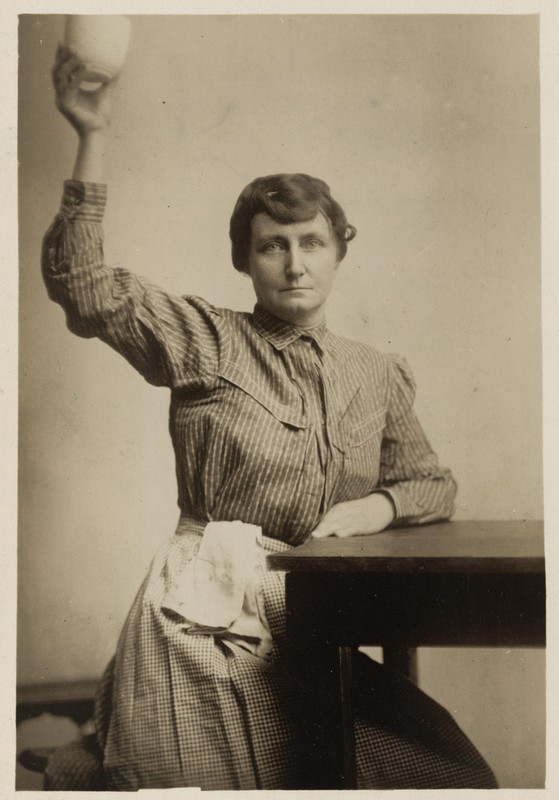
Picketing continued into 1919 as the Nineteenth Amendment was defeated twice in Congress. Silent Sentinels burned "watch fires" in which they burned Wilson's letters and occasionally an effigy in protest. Library of Congress.
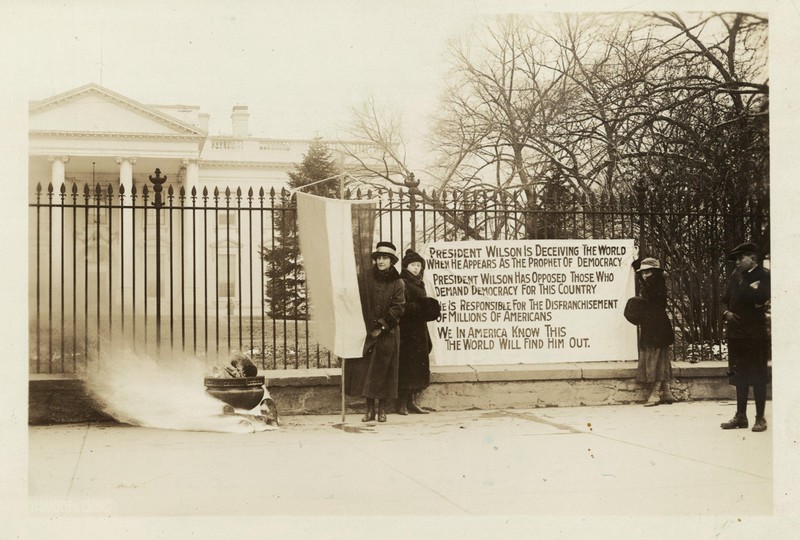
After the passage of the Nineteenth Amendment, suffragists began advocating for the Equal Rights Amendment, which Alice Paul would help pass in 1977.
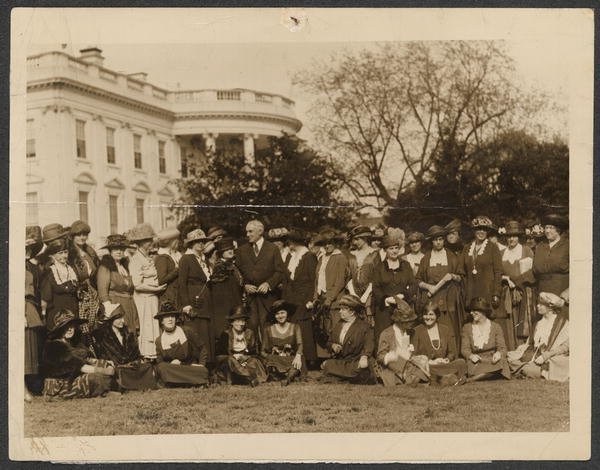
Backstory and Context
Text-to-speech Audio
"Mr. President, how long must women wait for liberty?"
On January 10, 1917, women of the National Woman’s party began a protest in front of the White House that would last for more than two years. They stated their message through their silence and the declarative phrases on the large banners they carried. Called the “Silent Sentinels,” the picketers advocated for women’s suffrage, facing harassment, arrest, and imprisonment until the Nineteenth Amendment was passed on June 4, 1919. The activism of the Silent Sentinels is part of a longer history of organized women’s rights advocacy, beginning with the first women’s rights convention held at Seneca Falls in 1848 and continuing to this day.
Before the Nineteenth Amendment, states decided who had the right to vote. When the United States was formed, all states prohibited women from voting. Through the women's suffrage movement beginning in the nineteenth century, women gained the right to vote in some states, but the United States Constitution remained unchanged. Groups such as the National Woman’s Party advocated for such a change to allow universal suffrage for women.
The National Woman's Party (NWP) was founded in 1913 by Alice Paul and Lucy Burns after the Woman Suffrage Procession, a march down Pennsylvania Avenue in Washington, D.C. that Paul successfully organized. Women’s rights groups used a variety of tactics to advocate for their cause. The women of the NWP preferred nonviolent yet dramatic tactics such as petitions, parades, speeches, and pickets along with lobbying to Congress and the President. On January 9, 1917, group of NWP members met with President Woodrow Wilson, who suggested the women “concert public opinion.”1 The NWP knew it was time to make a bolder statement to both the President and the public. The following day, January 10, a group of twelve women led by Alice Paul stationed themselves at the east and west entrances of the White House. There, they stood silently and held banners with clear and direct statements, often cleverly using Wilson’s own words. Their location, their silence, and their banners were carefully planned rhetorical strategies of the NWP to demonstrate their commitment to the cause.
The picket continued six days a week, usually with no more than twelve women at a time. As intended, their methods caught the attention of national press, which stimulated a variety of responses. Some praised the women’s dedication, as one woman wrote, “I believe that each day those banners are unfolded visualizing woman's demand for ‘liberty’ there is being released through that simple act great spiritual forces which are sweeping our country from coast to coast.”2 Some fellow suffragists agreed with the cause but disagreed with the methods, arguing the NWP, though nonviolent, was still too militant and unladylike or should focus on state advocacy. Some people opposed the cause all together. On a day to day basis, the picketers faced harassment and violence from men on the street and received no police protection.
"We shall fight for the things which we have always carried nearest our hearts—for democracy, for the right of those who submit to authority to have a voice in their own governments." – banner quote taken from Wilson’s address to Congress on April 2, 1917.
The NWP picketers were highly aware of current events, which they rhetorically incorporated into their messages. The largest demonstration of the Silent Sentinels took place on March 4, 1917, Wilson’s second inauguration, when 1,000 women marched around the White House. The picketers created banners referencing current events such as Independence Day, Bastille Day, the 1917 Immigration Act, and World War I. Unlike during the Civil War, when most women’s rights activists suspended their work in favor of the war effort, the NWP continued their protest. Banners used patriotic terms and phrases to link the suffrage movement to the national fight for democracy. One banner claimed that the United States was not a democracy due to female disenfranchisement, which caused a flurry of negative press along with the first arrests of picketers in June. President Wilson at first ignored the picketers, though as arrests and violence against them intensified, he would soon have to intervene.
When arrested and jailed, the picketers sustained their Silent Sentinel identities. At Occoquan Workhouse (now Lorton Correctional Complex) and the District Jail, they staged hunger strikes and refused President Wilson’s pardon, arguing that accepting pardon would be an admission of guilt. The women were subjected to unsanitary conditions, force-feedings, harassment, and occasionally solitary confinement, as in the case of Alice Paul, who was arrested in October 1917 and placed in jail by her own request. Violence against the women mounted on November 14, 1917, at Occoquan Workhouse, where the superintendent and forty of his guards violently beat the picketers. Called the Night of Terror, the event was heavily publicized by NWP members outside of jail while protest among inmates continued.
With increased press coverage, President Wilson released the picketers from jail on November 27. On January 9, 1918, President Wilson made his first public declaration in support of a women’s suffrage amendment. The picketers’ arrests were declared unconstitutional in March. Throughout the next year and a half, the suffragists continued their fight for the amendment, with support of the President, while Congress struggled to pass legislation. The House and Senate introduced amendment legislation, but it was defeated in the Senate in October 1918 and February 1919. The NWP responded with watch fire demonstrations and burning Wilson’s speeches and effigy. The House passed the amendment on May 21, 1919, followed by the Senate on June 4, 1919. With this victory, the NWP led a sweeping ratification campaign across the nation. They needed at least 36 state legislatures to ratify the amendment before it became law. On August 26, 1920, the Nineteenth Amendment became law. Women voted for the first time on November 2 of that year.
The Silent Sentinels’ public activism compelled President Wilson and Congress to support women’s suffrage. By the end of the picket on June 4, 1919, around 2,000 individual women participated. They demonstrated commitment to their cause by standing outside the White House in silence, enduring public harassment and violence, continuing other campaigns in the NWP offices, and continuing their protest in jail. Women continued the fight for equality long after the Nineteenth Amendment. Black women, restricted from voting in Southern states, fought for suffrage into the 1960s. Alice Paul proposed the Equal Rights Amendment in 1923 and continued to fight for it until it passed in 1972. The Silent Sentinels remain a powerful image for the women’s rights movement.
Sources
1. Stillion, “Militancy, Power, and Identity,” 399.
2. Stillion, “Militancy, Power, and Identity,” 407.
Adams, Katherine H. and Michael L. Keene. Alice Paul and the American Suffrage Campaign, 157-90. University of Illinois Press, 2008.
Library of Congress. “1918 to 1920.” Women of Protest: Photographs from the Records of the National Woman's Party. Library of Congress. Accessed November 2017. https://www.loc.gov/collections/women-of-protest/articles-and-essays/historial-timeline-of-the-national-womans-party/1918-to-1920/
Library of Congress. “Tactics and Techniques of the National Womans Party Suffrage Campaign.” Women of Protest: Photographs from the Records of the National Woman's Party. Library of Congress. Accessed November 2017. https://www.loc.gov/collections/women-of-protest/articles-and-essays/tactics-and-techniques-of-the-national-womans-party-suffrage-campaign/
Stillion Southard, Belinda A. 2007. "Militancy, Power, and Identity: The Silent Sentinels as Women Fighting for Political Voice.” Rhetoric & Public Affairs 10, no. 3: 399-417.
